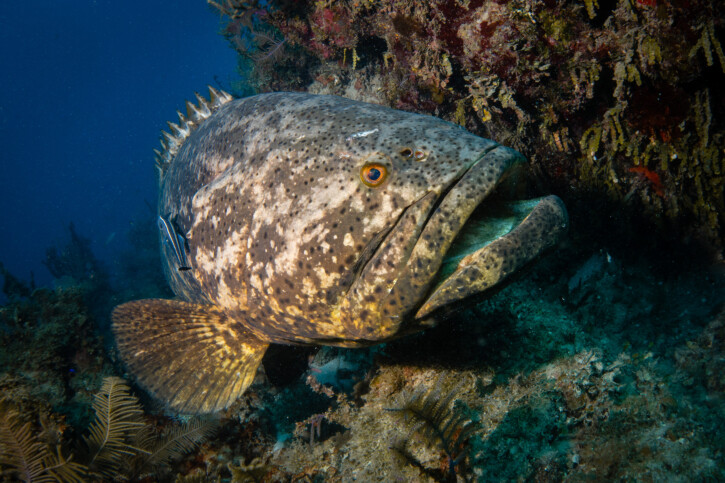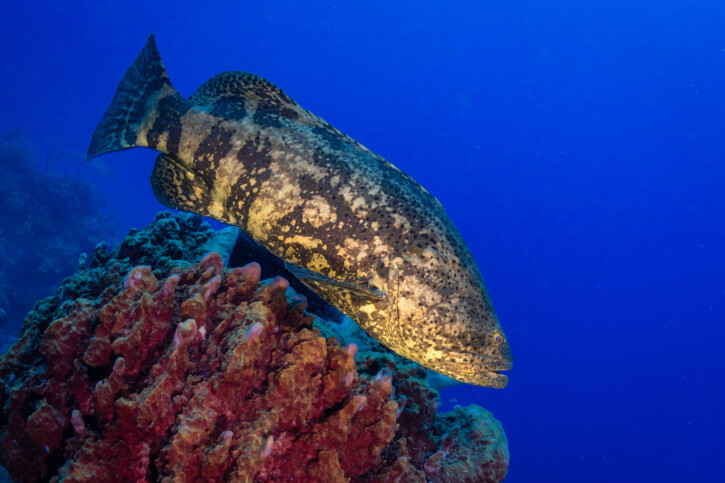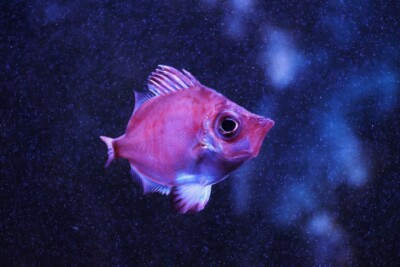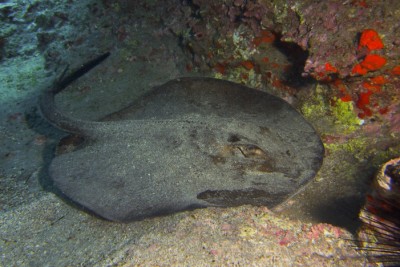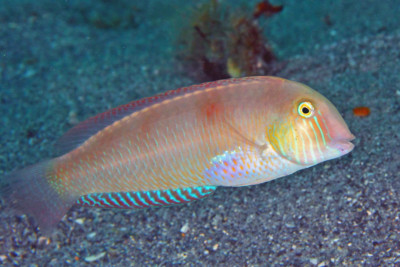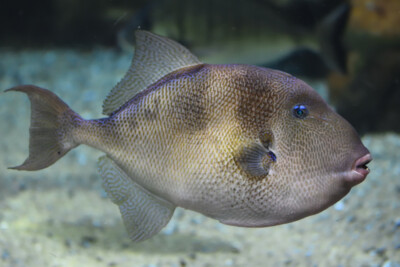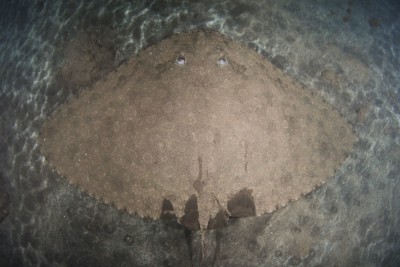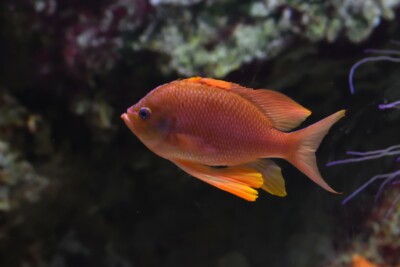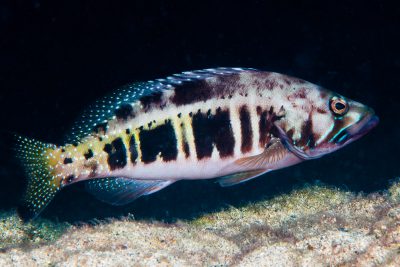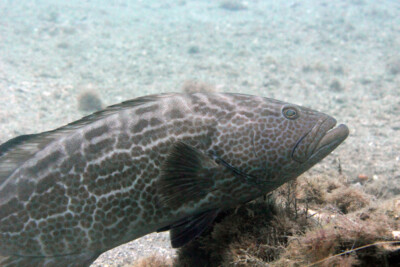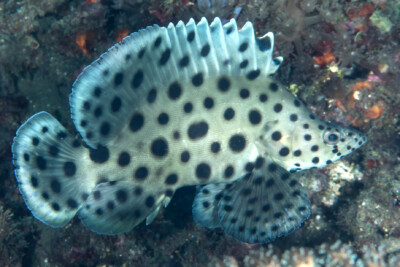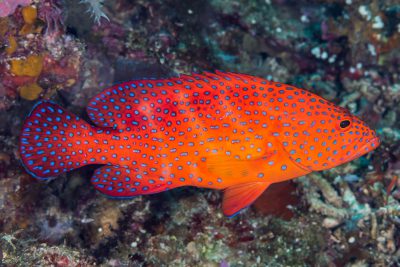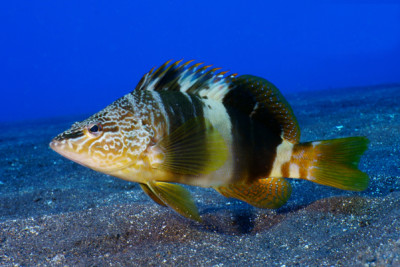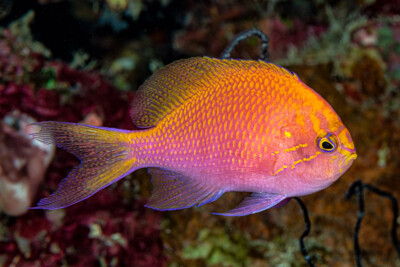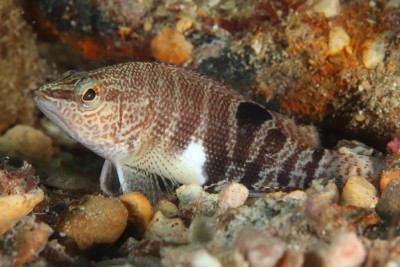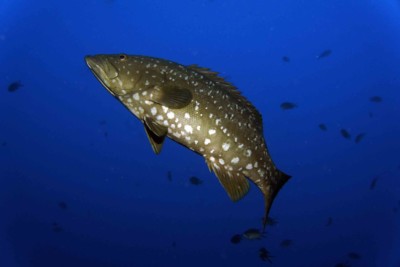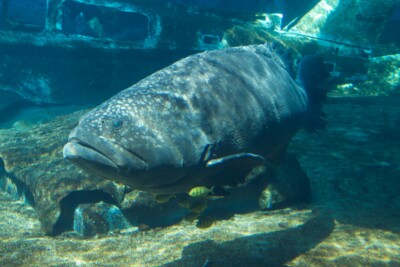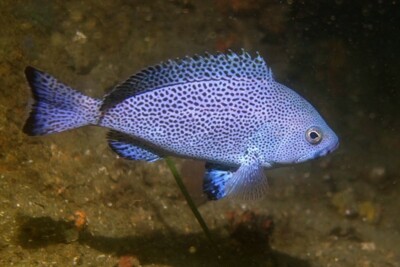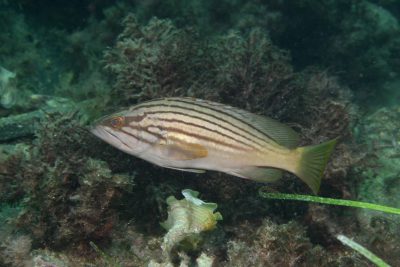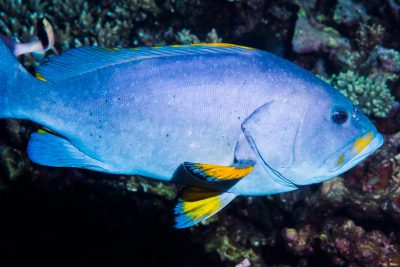atlantic goliath grouper
| Scientific name | Epinephelus itajara |
|---|---|
| Descriptor | Lichtenstein |
| Year of description | 1822 |
| IUCN category (World) | VU |
| Family | Serranidae |
| Genus | Epinephelus |
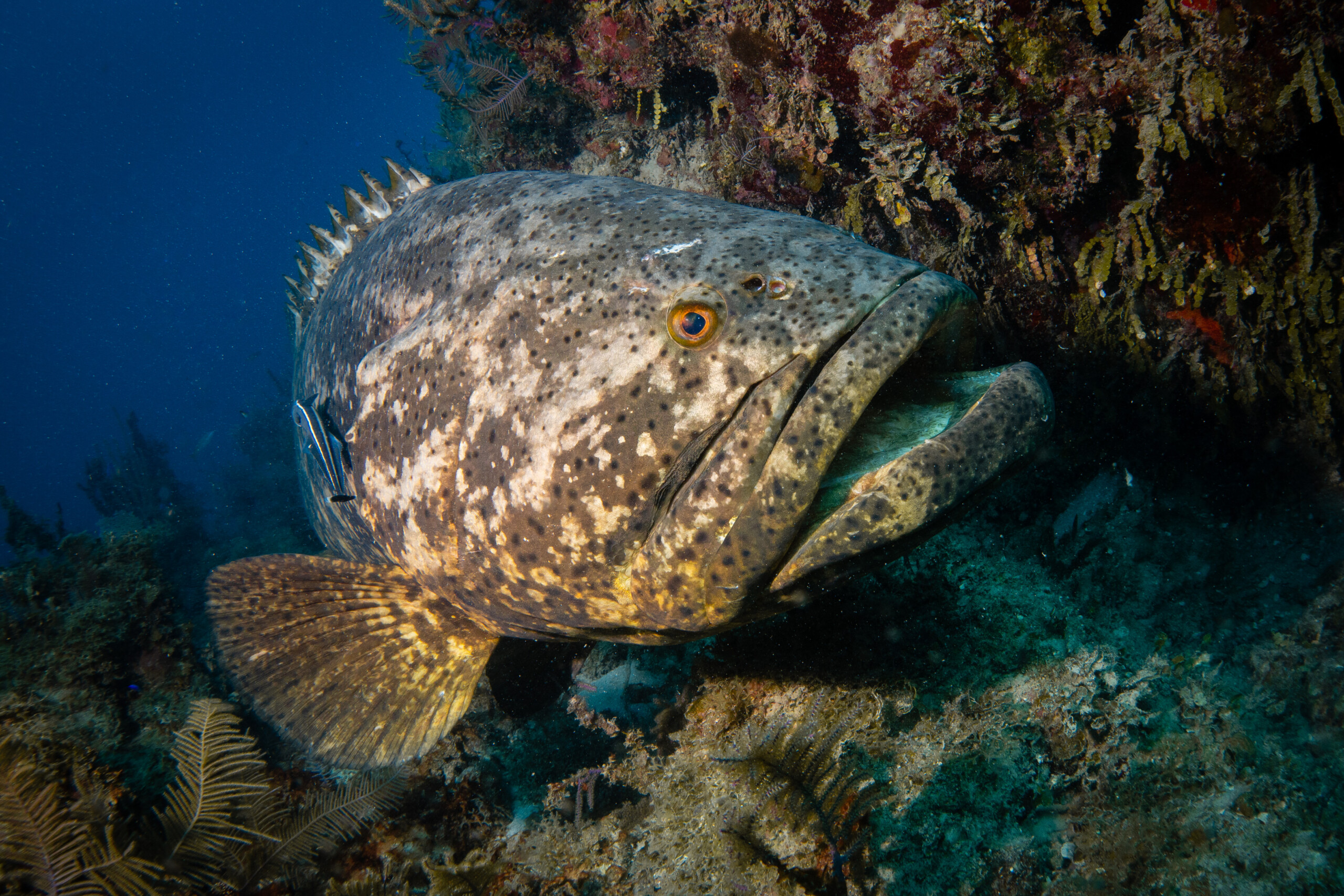

Introduction
Epinephelus itajara, commonly known as atlantic goliath grouper, is a salt water fish.
This sheet is currently being prepared. The texts currently proposed come from our data model or are being drafted. To request priority for this content, you can write to us HERE.
Who is it?
Genus Epinephelus
In 2019, the genus Epinephelus comprised 87 species according to FishBase. These fish are commonly known as "groupers" and belong to the "serranid group" (Serranidae).
They are territorial carnivores with elongated and robust bodies. They have imposing heads with canines in the front of their jaws and protractile mouths. All species possess 10 or 11 dorsal spines.
Most species are found in coral reefs or rocky areas, with some exceptions (such as E. aeneus, E. bruneus, or E. areolatus) living in sandy, muddy, or silty bottoms. Adults are typically observed at depths ranging from 10 to 200 meters. Most Epinephelus are recognized as protogynous hermaphrodites, meaning they are born as females and become males as they grow. However, not all females may change sex, and some males may not go through this commonly accepted stage.
These fish are highly valued commercially for consumption and recreational fishing, but they are vulnerable to overfishing due to their slow growth, late maturity, and the formation of reproductive aggregations. Overfishing, particularly targeting mature individuals, can lead to sex-ratio imbalances and affect reproduction. Several groupers are now the subject of aquaculture farms (especially E. coioides and E. malabaricus).
According to the IUCN, overfishing and pollution have already caused a significant decline in the populations of many groupers, and several species are endangered.
Morphology
-
Average size150 cm
-
Maximum size250 cm
-
Longevity37 year
-
Patternmottling
-
Average size150 cm
-
Maximum size250 cm
-
Longevity37 year
-
Patternmottling
How to recognize This fish ?
The atlantic goliath grouper measures around 150 cm. The dominant males can however reach 250 cm. This fish is bicolore with a predominantly marron and blanc body. The also has marron and blanc mottling.
Sexual dimorphism
The adult male is bigger than the female.
Behaviour & Life cycle
-
dietcarnivorous
-
Sociabilitysolitary
-
territorialYes
-
Way of livingdiurnal
The atlantic goliath grouper hunts in the stalk and is one of the predators of its biotope. Opportunistic, it does not hesitate to attack any smaller animal nearby.
The atlantic goliath grouper is a fish solitary naturally found at mid-depth and near the bottom. This species is carnivorous .
The atlantic goliath grouper is a territorial animal that does not tolerate any incursions into its living area. It is particularly virulent against other territorial species and it can provoke heated fights. Relationships between conspecifics are also hectic, with each seeking to secure its place.
Reproduction
-
Reproductionovipare
-
Hermaphroditeprotogynous
The atlantic goliath grouper is a fish ovipare. always born female. Growing up, individuals will change sex to become male, this is called successive hermaphroditism of the protogynous type.
Risks for humans
-
VenomousNo
-
BiteYes
This species can attack if it feels threatened. It is important to be particularly vigilant especially during dives or fishing sessions.
Origin and distribution

What is its habitat?
Natural environment characteristics
-
Temperature23 - 28 °C
-
Depth0 - 100 m
Biotope presentation
The atlantic goliath grouper is most often found at a depth between 0m and 100m. However, it is not impossible to find this species at other depths.
Species of the same biotope
To go further
Sources & Contributions
Participation & Validation
The Fishipedia team and specialist contributors are committed to providing high-quality content. However, although the information comes from scientific sources or testimonials from specialists, the cards may contain inaccuracies.

Adrien Falzon

Benoit Chartrer
Translation
Translation done with the valuable contribution of our translators, who make this information available to a wider audience. We sincerely thank them for their commitment.
Bibliographic references
Mercury and histopathology of the vulnerable goliath grouper, Epinephelus itajara, in U.S. waters: a multi-tissue approach - Douglas H Adams - Christian Sonne - Elsevier Ltd - 2013.
The influence of spear fishing on species composition and size of groupers on patch reefs in the upper Florida keys - Sluka RD - Sullivan KM - department of biology, University of Miami - 1998.
The Effects of Fishing, Climate Change, and Other Anthropogenic Disturbances on Red Grouper and Other Reef Fishes in the Gulf of Mexico - Felicia C Coleman - Christopher C Koenig - Oxford University press - 2010.
Le mérou géant (Epinephelus itajara) Synthèse bibliographique - David Fransolet - Université des Antilles et de la Guyane - 2014.
Preliminary investigations of reproductive activity of the Jewfish, Epinephelus itajara (Pisces: Serranidae) - Patrick L. Colin - Caribbean Marine Research Center - 1990.
Historical declines of goliath grouper populations in South Florida, USA. - Loren McClenachan - Inter-Research Science Publisher - 2009.
FAO Species Catalogue. Vol. 16. Groupers of the world (family Serranidae, subfamily Epinephelinae). - Heemstra, P.C - J.E. Randall - FAO Fisheries Synopsis - 1993.
Scientific partners
Tags
#Serranidae
#Epinephelus
#barrière de corail
#coralligène
#crique côtière
#fonds vaseux
#Gulf of Mexico
#Caribbean Sea
#Atlantic Ocean: North Coast of Brazil
#Océan Atlantique Est Afrique - Golfe de guinée
#Northwest warm temperate Atlantic Ocean
#Southwest Tropical Atlantic Ocean
#açores
#Canary Islands
Species of the same family
Same genus
Species of the same biotope
